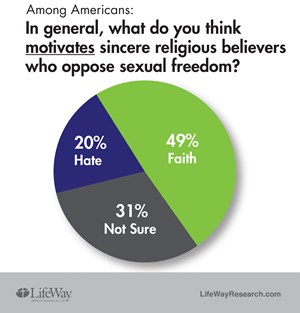Evangelicals have been working to gain political influence in a visible way since the 1970s. They made some progress under Reagan, Bush I, and Bush II, gaining considerable influence in the House in between. But in a strange twist of fate, evangelicals seem to be gaining their greatest influence yet under the presidency of a billionaire philanderer.
When Beverly LaHaye founded Concerned Women for America in 1979, the organization positioned itself as an outsider. No longer.
As Feministing reports:
Trump intends to nominate a woman named Penny Young Nance as ambassador-at-large for global women’s issues. As such, she’d be responsible for managing the State Department’s programs to fight gender-based violence and promote women and girls’ educational and economic achievement.
Here’s the problem: Penny Young Nance has made her career standing in the way of girls’ and women’s rights.
Nance is the President and CEO of Concerned Women For America (CWA), an organization whose mission statement says it “protects and promotes Biblical values and Constitutional principles” in America.
Penny Nance, CEO of Concerned Women for America, ambassador-at-large for global women’s issues. I’m not sure there’s much that better incapsulates the backwards nature of these appointments—except perhaps Betsy DeVos. Appointing a woman who had spent her career dismantling the public schools to head the Department of Education ranks right up there with appointing a woman who spent her career standing in the way of girls’ and women’s rights as ambassador-at-large for global women’s issues.
Lest you think Feministing is exaggerating, here are some specifics:
CWA opposed the reauthorization of the Violence Against Women Act, partly because it “creates new protections for homosexuals” and partly because it “encourages the dissolution of marriages.” Of course the only marriages that VAWA helps dissolve are abusive ones, but I guess Nance is more concerned with the nuclear family than the 12 million people abused by intimate partners in the United States every year.
Evangelicals like those at Concerned Women for America tend to oppose divorce even in case of abuse, valuing the intactness of the traditional family above the safety of women and children. Prominent evangelical John Piper has argued repeatedly that even an abused woman must continue being submissive to her husband (click here for Sarah Moon’s excellent treatment of Piper’s various statements).
Of course, CWA has continually claimed that they do care about preventing domestic violence. It’s just that they disagree on what prevents domestic violence. An article since removed from their website alleged that there is no proof that the Violence Against Women Act (VAWA), which funds rape crisis centers and hotlines and provides legal aid for survivors of domestic violence among other things, actually helps prevent domestic violence. Other CWA articles on the VAWA took on a similar theme—domestic violence is bad, but the VAWA is a waste of money, and we need to focus on policies that actually prevent domestic violence. What policies, exactly?
An analysis of the CWA website turns up a pattern. CWA invokes domestic violence when opposing same-sex marriage—claiming that domestic violence rates are higher in same-sex relationships—and when opposing abortion—calling abortion “the biggest act of domestic violence against women and children.” In fact, CWA blames no-fault divorce for higher rates of domestic violence.
Have a look at this:
The statistics are staggering. More than 40% of marriages end in divorce, and about 41% of children are born out of wedlock. That statistic is absolutely heartbreaking for the African-American community, with more than 70% of children born out of wedlock.
These statistics, and the negative consequences associated with them, are the direct result of the policies our society has supported in recent years. It is estimated that when “no-fault divorce” laws began to be passed in 1969, the divorce rates in the different states went up about 25%.
We [as a society] have promoted these policies, despite overwhelming evidence telling us that communities with a higher percent of healthy marriages enjoy many benefits, including:
1. Higher rates of physically healthy citizens
2. Higher rates of emotionally healthy citizens
3. Higher rates of educated citizens
4. Lower domestic violence rates
How does CWA propose to protect women from domestic violence, in other words? By discontinuing gay marriage, banning abortion, and ending no fault divorce.
CWA also seeks to reduce domestic violence by promoting marriage, based on a profound misunderstanding of statistics—it is true that married couples have lower domestic violence rates than cohabitation couples, but it does not follow that if all cohabiting couples married domestic violence rates would fall accordingly—such a claim assumes that marriage is the only difference between these two groups, ignoring income, education, and the reasons a cohabiting couple has chosen not to marry. (Read more here.)
CWA actually spends very little webspace addressing domestic violence, compared with the space they devote to opposing birth control and abortion. CWA claims not to take a position on birth control, “but we draw a hard line on abortion and abortion-inducing drugs.” What are abortion-inducing drugs, pray? The IUD, the implant, and the birth control pill, among others. But let’s note something else—not taking a position on birth control means not promoting non-hormonal forms of birth control, such as condoms.
The ability to make one’s own reproductive choices has long been recognized as central to the wellbeing and empowerment of girls and women around the globe—especially in developing areas. Education is also viewed as central to empowering women and girls, as is delaying marriage. How would Nance stack up, if given the responsibility of shaping State Department priorities to take girls’ and women’s issues into account? It is unlikely that Nance would feel comfortable promoting birth control; her devotion to traditional marriage structures, though, is perhaps only more concerning.
Let’s be very clear about this: CWA does not believe in gender equality. Beverly LaHaye founded CWA to oppose the Equal Rights Amendment. Even today the organization speaks out against feminism at every turn. CWA opposed the creation of the National Museum of Women’s History, which was founded in 1996 and constructed in the 2000s. As CWA explains, “the museum’s online exhibits tout the ‘progressive era’ and feminism but do not acknowledge their ramifications, the destruction of marriage and the family.”
At this point I think we need to pause and look at the job description of the ambassador-at-large for global women’s issues. The Office of Global Women’s Issues is a division of the State Department created under Obama in 2009. According to its website:
As a policy office with a small stable of innovative programs, the office serves as a resource for U.S. diplomats in Washington and around the world. It also leads on the Department’s priorities around gender equality, including gender-based violence, women’s economic empowerment, women’s participation in peace and security, and adolescent girls.
Concerned Women for America is not pro-woman. It is pro-family. Lest you think that is a distinction without a difference, consider CWA’s promotion of banning no-fault divorce as a way to fight domestic violence.
Concerned Women for America has also had a fairly laser-like focus on the U.S. A piece published by CWA’s Beverly LaHaye Institute in 2005 argued that “juggling a demanding career and family life is frazzling and stressful” and that when women have a career it is “often at children’s expense.” In another article, Nance wrote about what she called “the feminist myth of ‘work-family’ balance.” How would this approach to women’s issues and family life translate globally?
In many areas of the world, particularly those that are less advantaged, women’s lives are filled with constant work. Their work looks different, of course—it is often labor that takes place within the home, whether domestic or paid. The Netflix series “Daughters of Destiny” provides a compelling picture of the sort of female labor common across the globe. Daughters of Destiny follows a group of poverty-stricken girls attending a school for “untouchable” children—a school designed to propel the girls into white collar careers that will enable them to raise their families and communities out of poverty. What would Nance have to say about this project?
Women’s economic empowerment does not appear on the CWA’s list of issues. Nor does gender-based violence or gender equality. What does appear on their list? Have a look:
Sanctity of Life:
CWA supports the protection of all innocent human life from conception until natural death. We also support alternatives to abortion and healing for mothers suffering from the results of abortion. [Read More]
Defense of Family:
CWA believes that marriage consists of one man and one woman. We seek to protect and support the Biblical design of marriage and the gift of children. [Read More]
Education:
CWA supports reform of public education by returning authority to parents and also accessibility to alternatives forms of education. [Read More]
Religious Liberty:
CWA supports the God-given rights of individuals in the United States and other nations to pray, worship, and express their beliefs without fear of discrimination or persecution. [Read More]
National Sovereignty:
CWA believes that neither the United Nations nor any other international organization should have authority over the United States in any area. We also believe the United States has the right and duty to protect and secure our national borders. We believe in budget restraint which embodies responsible spending, small government and a budget in which the U.S. government spends within its means and ceases to steal from future generations. [Read More]
Sexual Exploitation:
CWA endeavors to fight all pornography, obscenity, prostitution, and sex slavery. [Read More]
Support for Israel:
CWA believes that the people and nations who stand with Israel and the Jewish people will be blessed by God. We believe that any foreign policy effort to withdraw U.S. support for Israel is in direct contradiction to America’s national interests. [Read More]
The only items on this list that could translate effectively to global women’s issues are “education” and “sexual exploitation.” But even here, when you click “read more” you find a position statement littered with Bible verses, an approach that wouldn’t translate well to many areas of the world. Furthermore, “education” has literally nothing to do with educating or empowering girls—it’s about eliminating sex education and providing parents with taxpayer funded religious schools.
Now wait. We’re not talking about Trump nominating Concerned Women for America to run the office of global women’s affairs. We’re talking about him nominating Penny Nance to run it. Sure, Penny Nance is the CEO of concerned Women for America, but perhaps she has experience outside of this organization that mitigates some of the things outlined above? Let’s take a look.
Areas of Expertise: American Exceptionalism, Family, Sanctity of human life, Education, Health care reform, Religious liberty, Abortion, Sexual exploitation of women and children, Planned Parenthood government funding, economic issues realities, Marriage, National sovereignty, Support for Israel, Sex trafficking, Pornography,/Indecency and other cultural issues.
What does it mean that Nance has expertise in “American Exceptionalism”? Unless she’s a historian or political scientist, that’s a very odd thing to lead with. If I’m reading this right, “Health care reform” means resisting the Obamacare birth control mandate; “Planned Parenthood government funding” means trying to defund planned parenthood; and “economic issues realities” means talking about how women can’t have it all. “National sovereignty,” presumably, means taking pot shots at the U.N.
Nance graduated from Liberty University in 1988. She spent five years as Legislative Director for Concerned Women for America. During that time she ” also consulted for other non-profit organizations, including Prison Fellowship Ministries, the Center for Reclaiming America, and the Christian Music Industry” and served on the staff of Congressman Pat Swindall (R-Georgia). While her biography does not list any dates, Nance was listed as the former Legislative Director for Concerned Women for America when she went on Bill Maher’s show in 1999.
Nance indicated that she took a break from her career when she had children, and she was identified as a “suburban stay-at-home mom” when she was a guest on Fox in 2004. However, as Media Matters pointed out at the time, that wasn’t exactly fair. By 2004, Nance had founded the Kids First Coalition, served as its president, and was registered as a lobbyist for the group. In 2003, according to the organization’s website, Nance attended a world conference on sex trafficking, worked on bills relating to sex trafficking, and met with the president of the FCC.
What was the Kids First Coalition? It is unclear when exactly the group was founded and when it shut its doors, but the wayback machine first archived the group’s website in 2002 and the website was defunct after 2009. According to the organizations’ website, via the wayback machine:
Kids First Coalition will work to promote and encourage traditional families as well as to help those in crisis pregnancies or difficult circumstances. Our work as an advocate for those who cannot speak for themselves will make the U.S. stronger and more caring.
Nance’s CWA biography described the Kids First Coalition as a “non-profit focused on educating … on a variety of issues related to children.” Media Matters described it as an “anti-abortion nonprofit organization.” While the group’s mission statement (above) indicates a focus on abortion via “crisis pregnancy” work, the group lobbied on issues such as the child tax credit, education, adoption, crime, pornography, and abortion. In 2003, the current issues section described Kids First Coalition action on child pornography, “decency in broadcasting”, sex trafficking, cloning, and abortion.
Nance’s work with CWA and the Kids First Coalition led to a position with the FCC, which she took in 2005:
Nance most recently served … as Special Advisor for the Federal Communications Commission (FCC), where she advised the Chairman and the Commissioners on media and social issues. In this capacity, she served as a liaison and provided outreach to Congress, public interest groups, and industry leaders. Mrs. Nance’s key responsibilities centered on the protection of children, including broadcast indecency and the media task force on childhood obesity.
According to a 2005 LA Times article:
An outspoken anti-pornography advocate has been hired by the Federal Communications Commission to advise the agency on consumer issues involving the cable and broadcast industry, which has been under scrutiny for airing racy material.
Penny Nance, who previously ran the Kids First Coalition, which advocates on the issues of adoption, crime, pornography, abortion and computer safety, has been hired as a part-time advisor in the FCC’s Office of Strategic Planning and Policy Analysis, an agency spokesman said.
Nance, a self-described religious conservative, has testified before Congress and has been interviewed on cable television about Internet child pornography.
It was during the Bush years that Nance got her position with the FCC, and during the Bush years that Nance ran the Kids First Coalition, pushing right-wing traditional family positions and focusing on abortion, sex trafficking, and child pornography. During this period she likely built upon the networking she’d done as Legislative Director for Concerned Women for America in the 1990s.
Nance became the CEO of Concerned Women for America in 2010. However, she had never really left Concerned Women for America after giving up her position as Legislative Director. Instead, she served on the organization’s board in the intervening years. Nance also now serves on President Trump’s Life Advisory Council; her biography states that she is “speaking as a modern day Esther to both the President, Vice-President and key staff.” Grammatical issues aside, it takes a serious misreading of the book of Esther to come to this conclusion.
I think it is safe to conclude, after this brief look at Nance’s career, that the beliefs and ideas promoted by the CWA are the same beliefs and ideas Nance holds.
Nance’s work on sex trafficking is the only thing she has going for her in terms of qualifying to serve as ambassador-at-large for global women’s issues, but even that is undermined by her backwards and dangerous approach to domestic violence. Everything else—from her opposition to abortion and hormonal birth control to her belief that no-fault divorce should be eliminated and her focus on the importance of women being stay-at-home moms—would be a disastrous fit for an office that focuses on gender-based violence and women’s economic empowerment.


















